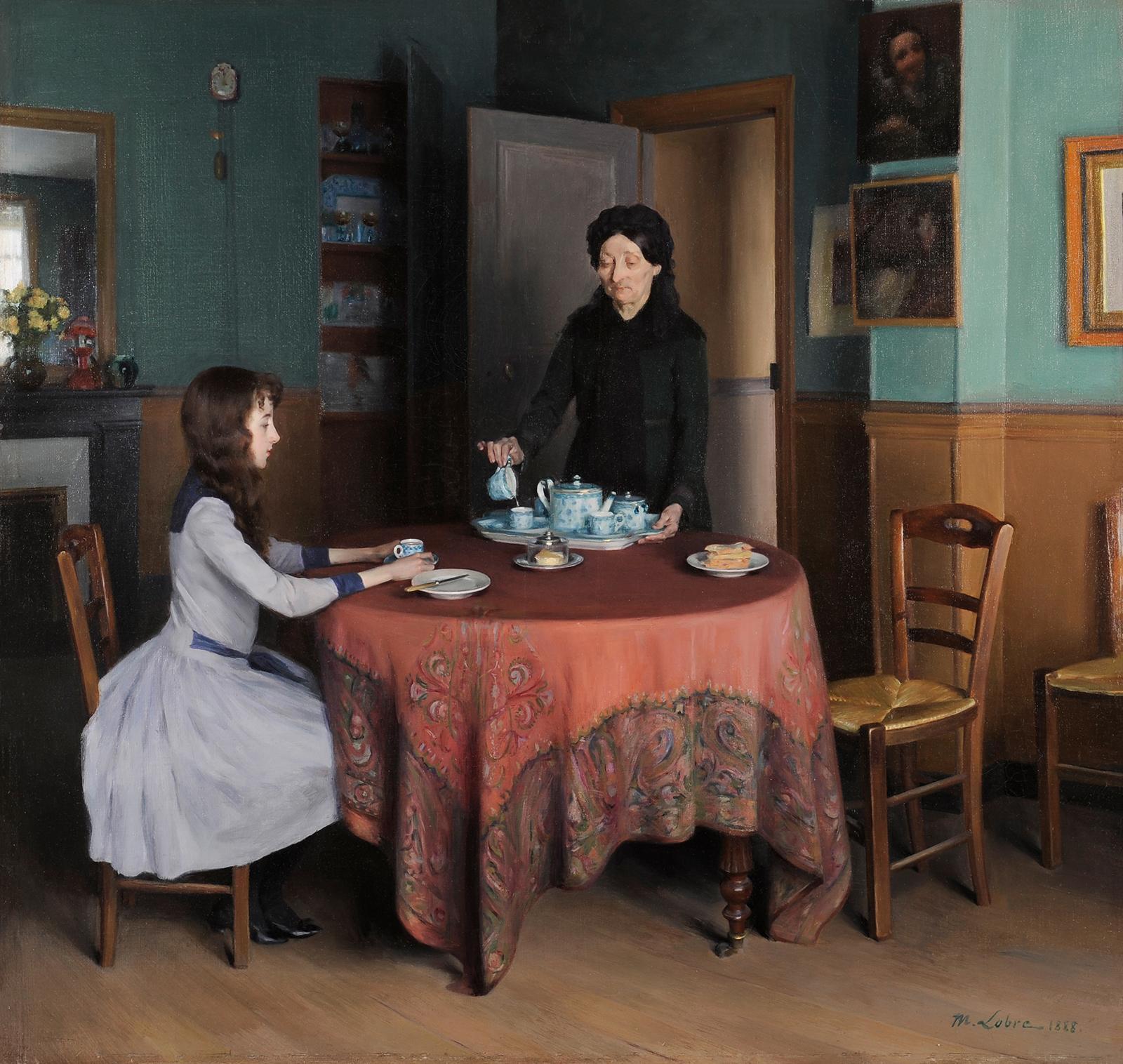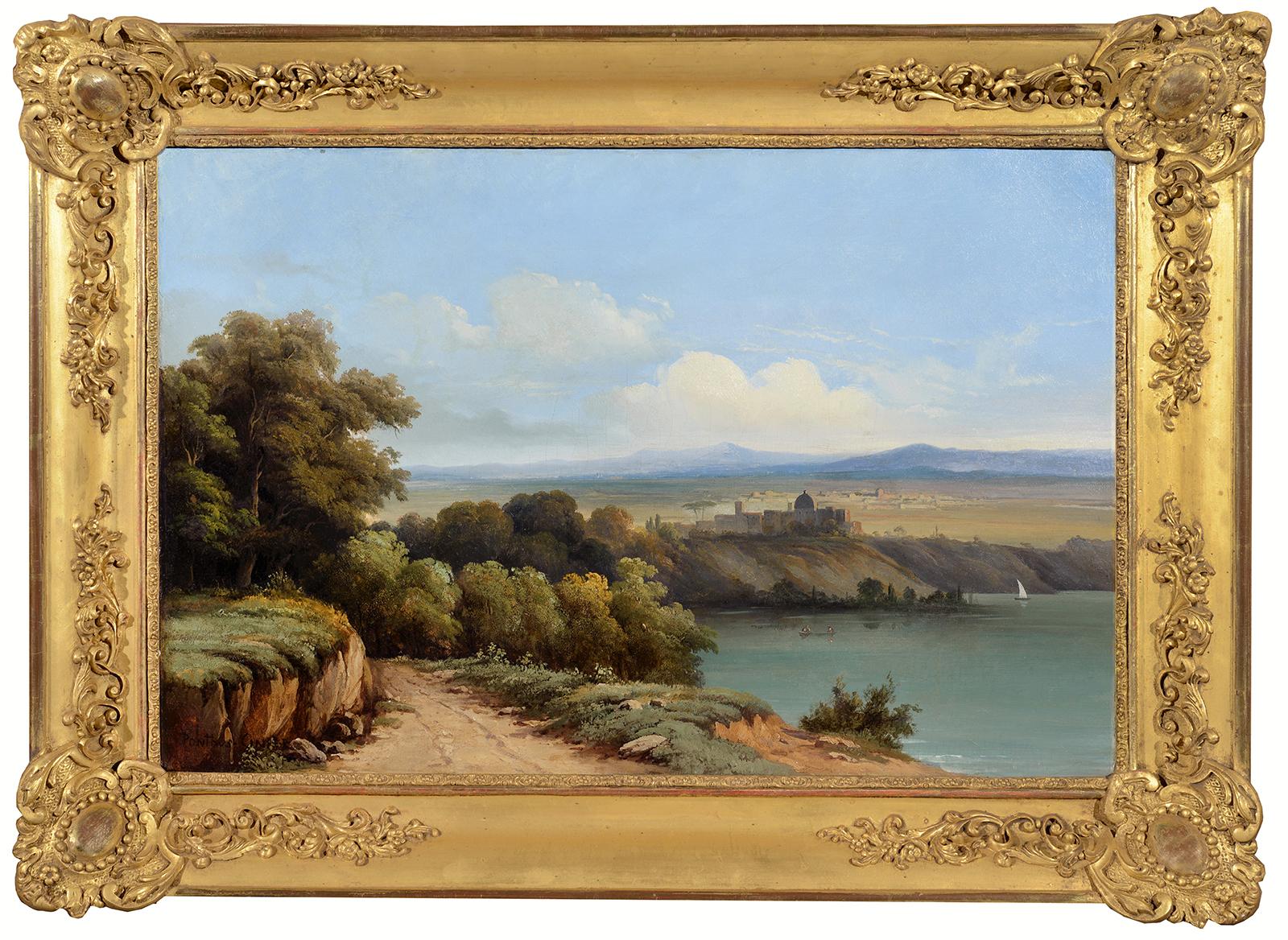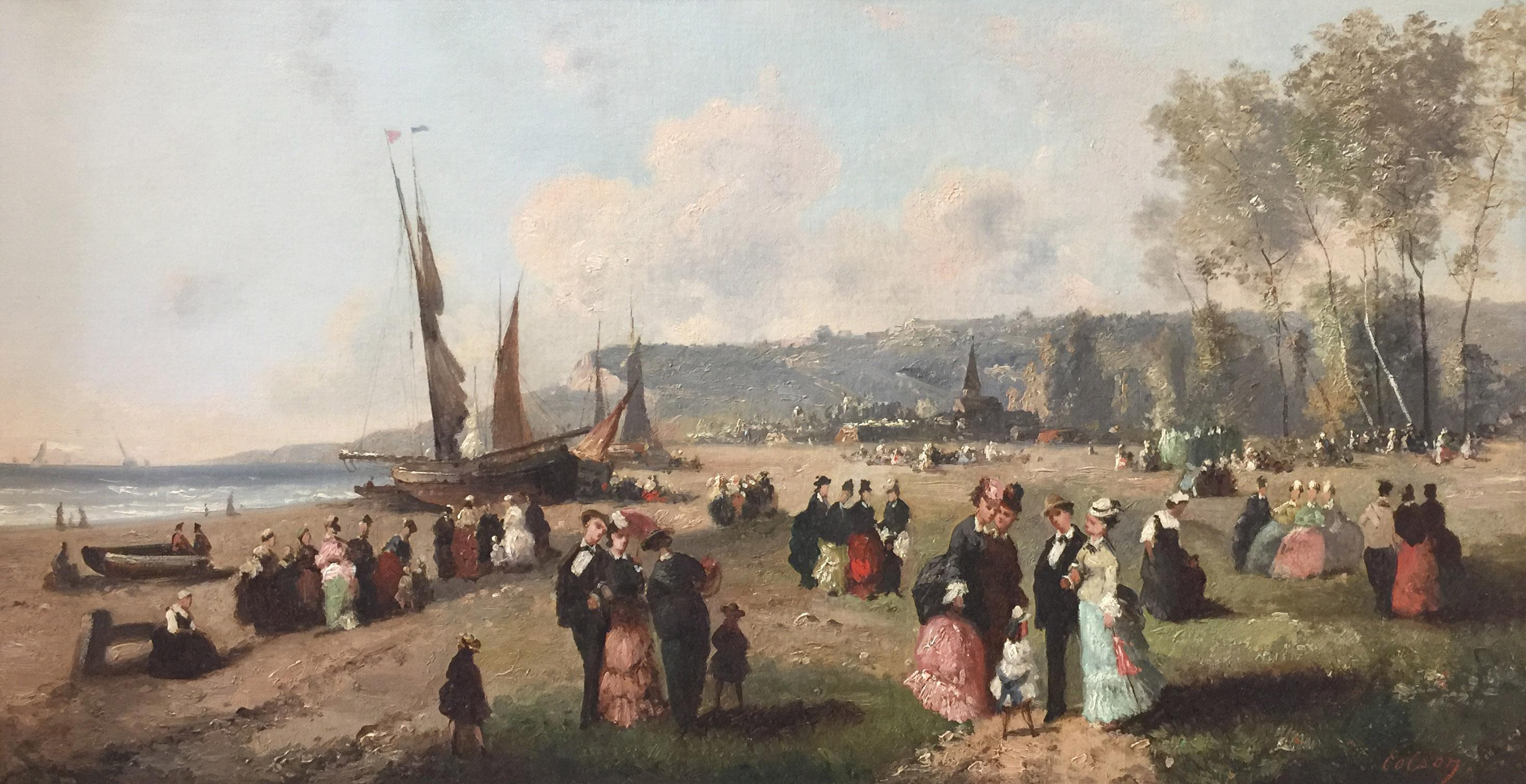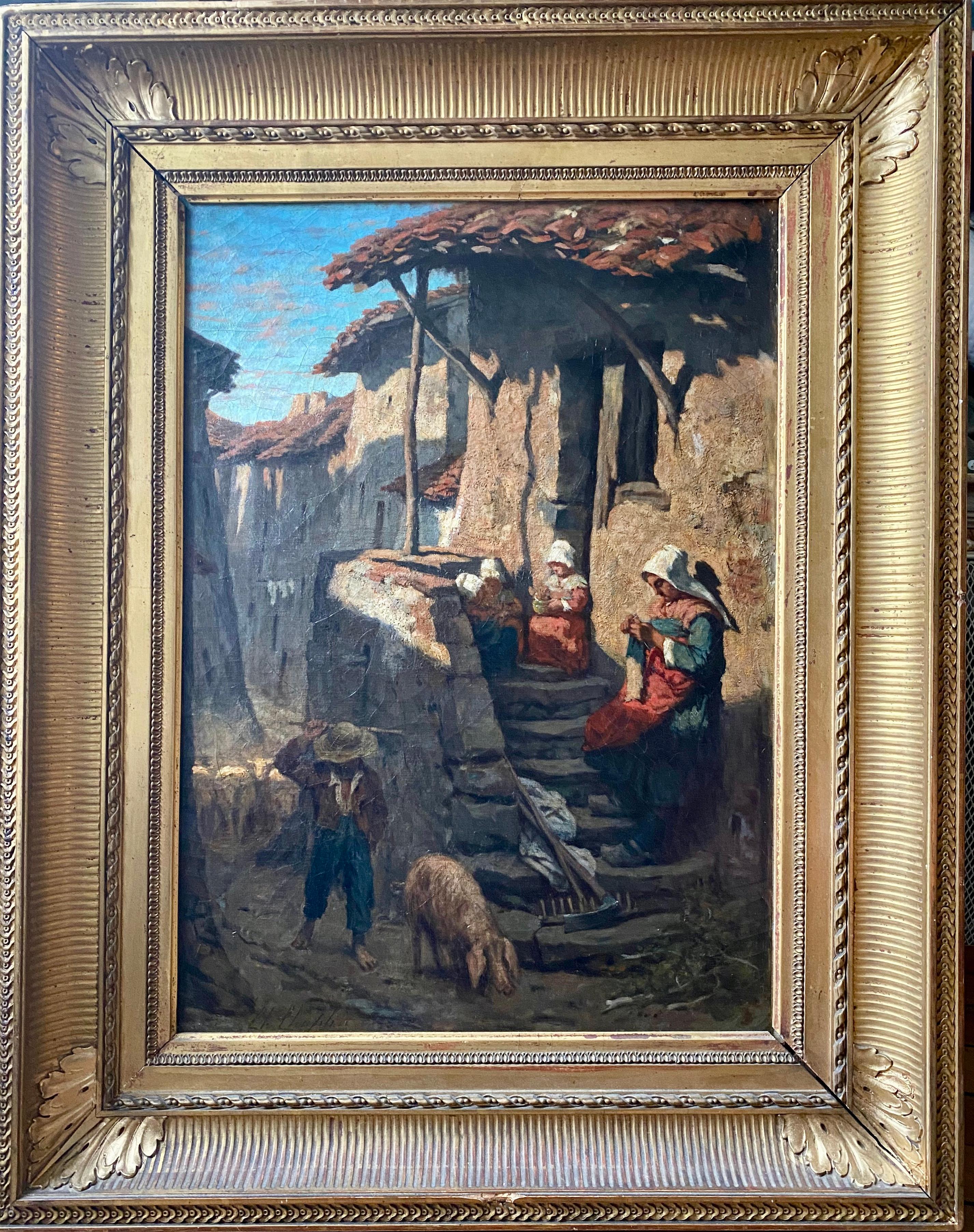Items Similar to Pointillist Painting "The Road Beneath the Snow" Eugène Bégarat (French, 1943)
Want more images or videos?
Request additional images or videos from the seller
Eugène BégaratPointillist Painting "The Road Beneath the Snow" Eugène Bégarat (French, 1943)1970
1970
About the Item
Pointillist Painting
"The Road Beneath the Snow (Le Chemin Sous la Neige)"
Eugène Bégarat (French, 1943)
Oil on canvas
15 3/4 x 31 1/2 inches
Saturated with winter's light glinting off the snow making sparkling jewels from the refracting sunshine.
Eugène Bégarat was born in 1943. At the age of seventeen, Bégarat entered the School of Decorative Arts in his hometown of Nice. In 1964, he moved to the capital of Paris where he continued his training at the Ecole des Beaux-Arts. Passionate about color and light, Bégarat is part of the great classic trend in contemporary art. He is inspired by the technical advances of the post-impressionists to build a personal touch that renews and modernizes pointillism and chromatic divisionism.
Early in his career, in 1964, Bégarat moved to Brittany to soak up the lights that inspired Felix Vallotton and the Nabis. He then went in search of stronger colored contrasts and traveled to southern Europe, and Mediterranean Africa (Spain, Italy, Morocco, Tunisia) where his style consolidates and refines from the contact with the vibrant. effervescent lights of the Mediterranean South.
He returned to settle in France, first in Paris and then permanently in 1993 in Provence, near Vence where he built an outdoor workshop/garden. There he installed his models adorned with brilliant fabrics. He thus perfects a work in which the horizon gradually disappears in favor of frames of foliage and natural elements sculpted by light. He thus begins to explore and to attempt his definition of the infinite variations of women and their garments, where the radiance of a complexion, the shine of the hair is underlined by the colored satins and the shimmering silks that he likes to use.
His canvases are vibrant and in constant motion, thanks to the opposition of primary colors: red-blue-yellow and binary: green-orange-violet. Post-impressionist painter in the line of Seurat and Signac. He also likes working with bold areas of luminous colors, more reminiscent of the work of Paul Gaugin.
Over time, his touch abandons the unique recourse to divisionism to integrate more and more colored areas. Eugène Bégarat has never been concerned with the quarrels and fashions that mark contemporary art.
Indifferent to the critical condemnations that have so disturbed the figurative artists of the twentieth century, Bégarat builds a solid and coherent work around light and color, in order to sculpt pictures of his vision of sublimated femininity, both eternal and subtly contemporary. Eugène Bégarat has an international reputation and regularly exhibited with great success both in France and abroad: Switzerland, United States, Italy, Lebanon, United Kingdom, etc. … His works are present in major international collections.
E. Bénézit, DICTIONNAIRE DES PEINTRES, SCULPTEURS, DESSINATEURS ET GRAVEURS.
Please note this piece is enroute to the States from a collection in Provence. 7850
- Creator:Eugène Bégarat (1943, French)
- Creation Year:1970
- Dimensions:Height: 15.75 in (40.01 cm)Width: 31.5 in (80.01 cm)
- Medium:
- Movement & Style:
- Period:
- Condition:
- Gallery Location:SANTA FE, NM
- Reference Number:1stDibs: LU1408214071182
About the Seller
5.0
Platinum Seller
These expertly vetted sellers are 1stDibs' most experienced sellers and are rated highest by our customers.
Established in 1995
1stDibs seller since 2020
91 sales on 1stDibs
Typical response time: 1 hour
- ShippingRetrieving quote...Ships From: Santa Fe, NM
- Return PolicyA return for this item may be initiated within 2 days of delivery.
More From This SellerView All
- "The Harvesters" Raphaël Dubois aka Chanterou (Belgium, 1888-1960)Located in SANTA FE, NM"The Harvesters" Raphaël Dubois aka Chanterou (Belgium, 1888-1960) Signed bottom left under the pseudonym "Chanterou" Oil on canvas 23 1/2 x 19 1/4 (27 3/4 x 23 3/4 frame) inches B...Category
1920s Landscape Paintings
MaterialsCanvas, Oil
- Orientalist: "Arabian Horseman" dated 1903 André ChaumièreLocated in SANTA FE, NM"Fantasia of Arabian Horseman" dated 1903 André Chaumière (French, XlX-XX) Oil on canvas Handcrafted original wood frame with bronze applique 20 3/4 x 12 3/4 (28 1/2 x 20 frame) inc...Category
Early 1900s Art Nouveau Figurative Paintings
MaterialsCanvas, Oil
- Marine Painting "Trois Pêcheurs" Louis Pastour (France, 1876-1948)Located in SANTA FE, NM"Trois Pêcheurs" Louis Pastour (France, 1876-1948) Oil on board Signed l.l. 7 7/8 x 4 7/8 (8 1/8 x 11 1/8 frame) inches Louis Pastour was called the “...Category
1930s Post-Impressionist Landscape Paintings
MaterialsOil, Board
- "El Torero- The Bullfighter" Circa 1950's Pierre Ambrogiani (France, 1905-1985)By Pierre AmbrogianiLocated in SANTA FE, NM"El Torero-The Bullfighter" Pierre Ambrogiani (France, 1905-1985) Oil on canvas Circa 1950's 28 1/4 x 20 3/4 (31 1/4 x 23 3/4 frame) inches "If Diego Velázquez and Henri Matisse h...Category
1950s Abstract Expressionist Abstract Paintings
MaterialsCanvas, Oil
- 18th Century European Portrait of a Child Saint John the BaptistLocated in SANTA FE, NM18th Century European Portrait of a Child Saint John the Baptist Oil on Canvas 19 x 14 1/4 inches This lovely and sensitively painting has been examined by a professional restorer w...Category
18th Century Old Masters Figurative Paintings
MaterialsOil, Canvas
- Mid-Century Cyclists-The Field Sprint Pierre Bosco #26 (Italy/France, 1909-1993)By Pierre BoscoLocated in SANTA FE, NMMid-Century Cyclists - The Field Sprint Pierre Bosco (Italy/France, 1909-1993) Oil on canvas 15 x 12 inches, frame size “The savage art of Bosco bears its rudeness and its mystery....Category
1960s Abstract Expressionist Abstract Paintings
MaterialsCanvas, Oil
You May Also Like
- Maurice Lobre (1862 -1951) The snackBy Maurice LobreLocated in BELEYMAS, FRMaurice LOBRE (Bordeaux 1862 - Paris 1951) Le goûter Huile sur toile H. 87 cm ; L. 91,5 cm Format peint d’origine, H. 101 cm ; L. 96 cm, disposé sur un châssis plus petit par l’artiste lui-même. Signée et datée 1888 en bas à droite Provenance : Collection privée, Lyon Exposition : 1889, Salon des Artistes Français, n°1719 « Intérieur », (ou 1720 nommé également « Intérieur ») Œuvres en rapport : Le Cabinet de toilette de Jacques-Emile Blanche, (titre erroné) H. 80 cm ; L. 85 cm, HST, Museo Thyssen-Bornemisza, Madrid, pendant de notre toile. Maurice Lobre a-t-il connu Marcel Proust ? On ne peut encore l'affirmer, bien qu'il ait eu de nombreux amis en commun avec l'écrivain. Mais sa peinture intimiste pourrait illustrer certaines pages de Du côté de chez Swann. Trois citations dues à des proches de Proust, l'une de l'écrivain Léon Daudet, la seconde du peintre Jacques-Emile Blanche, la dernière du poète mondain Robert de Montesquiou, donnent un aperçu de ce que fut la renommée de Maurice Lobre en son temps : "Il en va autrement de Lobre, le Vermeer français, le peintre exquis des intérieurs et des palais de Versailles, des reflets sur les meubles rares, de la lumière prisonnière des miroirs, des laques et des cuivres polis. Lobre est joyeux comme un coup de vent, qui fait envoler les préjugés et les poncifs, éloquent, passionné, ivre de la couleur et des formes, charmant et conquérant de toutes les matières. Il se promène ici-bas ainsi que dans un musée en plein-air, s'amuse de tout, rejette et maudit le laid et le vil, accueille et bénit le beau et le bien…" Léon Daudet L'Entre-deux-guerres. Souvenirs des milieux littéraires, politiques, artistiques et médicaux de 1880 à 1905. "Voici le patient, appliqué, sage M. Lobre. Il est difficile de mettre plus d'honnêteté à peindre des intérieurs sans figures. Je préfère ses petits salons de Versailles à ses cathédrales… Nous lui devons des petits bijoux d'émotion et de large fini." Jacques-Emile Blanche "Il a recueilli sur des toiles le visage du vieux Versailles (…). Il a peuplé de visions impalpables des chambres " où il s'est passé quelque chose ", et il en a saturé l'atmosphère de particules historiques. Donner une telle impression avec certitude, avec vérité, c'est plus difficile que de faire évoluer des personnages costumés, dans ce qu'on appelle bêtement "une reconstitution historique"." Comte Robert de Montesquiou Maurice Lobre commence sa carrière au Salon de 1882 où il expose deux portraits, dont celui de son camarade de l'atelier Carolus-Duran, le peintre espagnol Ramon Casas...Category
1880s French School Figurative Paintings
MaterialsCanvas, Oil
- Lake Albano, Castel Gandolfo ItalyBy Antoine Ponthus-CinierLocated in BELEYMAS, FRAntoine-Claude PONTHUS-CINIER (Lyon, 1812 - Lyon, 1885) Lake Albano, Castel Gandolfo and the Roman countryside Oil on canvas mounted on cardboard H. 38 cm; L. 55 cm Signed lower left Ponthus-Cinier belongs to what could be defined as the third (and so to speak last) generation of neo-classical or historical landscape painters, born in the years 1810/1820, like Félix Lanoüe, Achille Bénouville...Category
1840s French School Figurative Paintings
MaterialsCanvas, Oil
- Guillaume-François Colson - Sur la plage, french, beach, 19th century, paintingLocated in London, GBGuillaume-François Colson (1785-1860) Sur la plage oil on canvas 35 x 65 cm signed 'Colson' (lower right) Price: £18,000 GBP Provenance: MacConnal-Mason Fine Paintings Private coll...Category
19th Century French School Landscape Paintings
MaterialsOil, Canvas
- Boy in a landscape, large art deco period paintingLocated in Norwich, GBThis luminous landscape is perfectly capturing the light of early spring. A boy is climbing over wooden farm gates, with a backdrop of rolling hills. The painting has a gloriously fr...Category
1930s French School Landscape Paintings
MaterialsOil, Canvas
- Rural Life in Summer: 19th C Island Village Scene, Figures and Animals paintingBy Charles Joshua ChaplinLocated in Norwich, GBA wonderful and idyllic, mid 19th Century summery village scene, where a pretty young girl stands, knitting (perhaps she is secretly waiting for someone?), village women eat and work...Category
Mid-19th Century French School Landscape Paintings
MaterialsOil, Canvas
- Circle of Xavier Leprince - Picnic in the forestLocated in BELEYMAS, FRCircle of Xavier LEPRINCE (Paris 1799 - Nice 1826) Picnic in the forest Oil on canvas H. 36 cm; L. 26 cm This picnic scene places us around 1825/35, which makes it a rare representa...Category
1820s French School Figurative Paintings
MaterialsCanvas, Oil





